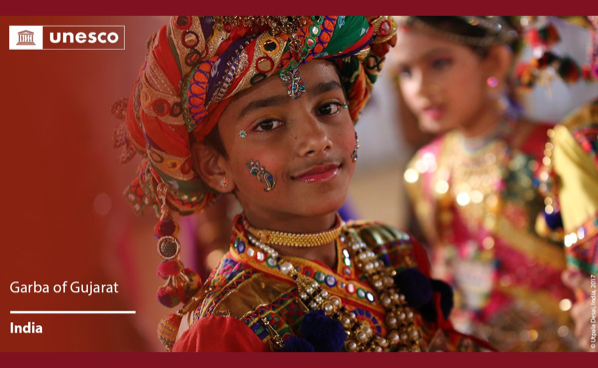Garba, the traditional dance form of Gujarat, has been recognized at the 18th session of the UNESCO’s Intergovernmental Committee for Safeguarding of Intangible Cultural Heritage held in Botswana.
The word comes from the Sanskrit word garbha, meaning “womb.” Traditionally, the dance is performed by women in a circle, wearing colourful costumes and accessories, around a clay lantern with a light inside, called a garbha deep (“womb lamp”).
The dance is accompanied by rhythmic clapping and singing of devotional songs, and sometimes by musical instruments such as dhol, tabla, and harmonium. Garba is a symbol of joy, devotion, and unity, as people from different communities and backgrounds come together to celebrate the divine feminine energy.
KnowALLedge Plus:
Garba of Gujarat joined 14 other elements from the country that have been inscribed on this prestigious list of UNESCO Intangible Cultural Heritage.
Here’s the other entries in the list, ranked chronologically:
2008: Kutiyattam (Sanskrit theatre),
Tradition of Vedic chanting,
Ramlila (the traditional performance of the Ramayana)
2009: Ramman (religious festival and ritual theatre of the Garhwal Himalayas)
2010: Chhau dance, Kalbelia (folk songs and dances of Rajasthan), Mudiyettu (ritual theatre and dance drama of Kerala)
2012: Buddhist chanting of Ladakh: recitation of sacred Buddhist texts in the trans-Himalayan Ladakh region, Jammu and Kashmir
2013: Sankirtana, ritual singing, drumming and dancing of Manipur
2014: Traditional brass and copper craft of utensil making among the Thatheras of Jandiala Guru, Punjab
2016: Nowruz, Yoga
2017: Kumbh Mela
2021: Durga Puja in Kolkata
